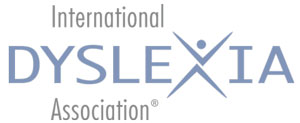Share This: 


Volume 8, Issue 3
October 2019

In this fast-paced world, it can be difficult to keep up with the latest news and research from so many different sources. What’s true? What’s not? Who is reliable? Who is just trying to sell the latest fad? In an effort to keep you in the loop, we have provided a few of our favorite links below. This issue, we look at three of our favorite links—moms calling for a systematic approach to instruction, a study about eliminating myths, and guidance on teaching letter-sound relationships.
Meet the Moms on the Front Lines of the Latest Reading Wars
The fact that many teacher-preparation programs across our nation do not include reading approaches based on the science of reading (e.g., language structure: phonology, phonics, orthography, morphology, semantics, syntax, etc.) is not news. The difference today is the reach of social media and its effective use by researchers, educators—and especially some parent groups. Learn about the success of two moms advocating for systematic approaches to teaching phoneme awareness and phonics.
Misunderstandings related to findings from brain research and misconceptions about how to apply these findings to teaching and learning are called neuromyths. Although we have known for many years that unwavering belief in some of these myths has become entrenched among educators, less has been known about their prevalence among the general public or those with more exposure to neuroscience information. Learn the results of a large-sample US study comparing both “prevalence and predictors of neuromyths among educators, the general public, and individuals with high neuroscience exposure.” Results indicate that greater knowledge of education and neuroscience may decrease, “but does not eliminate, belief in neuromyths.” Neuromyths associated with learning styles and dyslexia were found to be the most staunchly-held.
Phonics Faux Pas: Avoiding Instructional Missteps in Teaching Letter-Sound Relationships
The positive effects of explicit, systematic phonics instruction (i.e., teaching of grapheme-phoneme and phoneme-grapheme associations) has been proven time and again over several decades through respected scientific research. However, not all phonics instruction is created equal. Read this article to learn characteristics of the most effective and efficient instructional strategies for teaching phonics—especially for early reading instruction. Both what to teach and how to teach are discussed.
Programs Newly Accredited by IDA Prepare Teachers to Deliver Effective Standards-Based Instruction
Learn more about the seven educator preparation programs recently awarded accreditation by the International Dyslexia Association (IDA).
IDA’s Great Marathon Challenge
The International Dyslexia Association, Inc. (IDA), Jared Blank, and LeDerick Horne invite you to join the Great Marathon Challenge. Learn how we can do more together to raise awareness and support IDA.
Do you have a link you would like us to consider? Send us an e-mail with your link to the attention of the Examiner Editors at communications@dyslexiaida.org. Thanks!
Copyright © 2019 International Dyslexia Association (IDA). Opinions expressed in The Examiner and/or via links do not necessarily reflect those of IDA.
We encourage sharing of Examiner articles. If portions are cited, please make appropriate reference. Articles may not be reprinted for the purpose of resale. Permission to republish this article is available from info@dyslexiaida.org.

